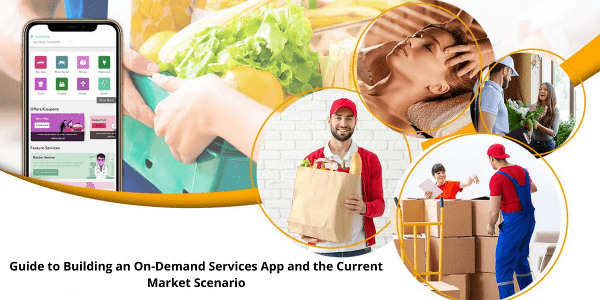Technology binds people together and everything fast along with it. People barely have time to rest and cannot manage to allocate time to get their essentials like groceries, food, etc. As they multitask at their workplace, people tend to forget essential things by their desks. They set wheels on their feet right after waking up from bed to meet their deadline in every way, and sometimes they even forget to buy gifts for their loved ones on special occasions. In this technological world, everyone can be a sorcerer, and smartphones are the magic wands. Instead of uttering the magic words, a few taps and swipes on their smartphones will do the job.


On-demand multiple service apps have the potential to bring essential services close to customers. There will not be any middleman in the on-demand services business model, and so the customers will be directly linked with the providers. This trend was initiated by Uber for ride-hailing services. Over the years, several companies have risen around the globe, inspired by Uber’s business model. Many entrepreneurs have tried to replicate its functionalities and operations in other sectors, and they hit gold. Uber has initiated a new trend, and the curve seems to be on the rise without any signs of downfall.
How to build an on-demand services app:
If you are an entrepreneur who is looking for opportunities to enter into this sector, now is your time to seize your moment. The scales and reliability of people towards on-demand services apps are increasing every day. They have become a conventional component and emerged as the saviors of many businesses. The preference brick and mortar businesses are decreasing as tables have turned. Entrepreneurs witness substantial growth in their overall revenue and user engagement numbers. These on-demand services apps have indeed unleashed a torrent of opportunities for entrepreneurs and comfort for the customers. Here are some insights into developing the application.
Research and reinventing is the key to succeed:
Always think from the end user’s perspective as they are the ones who are going to use your application. They will prefer your platform only if they find the services to be cost-effective and premium. You must offer exclusive features on your app, which your competitor apps don’t provide, and it will enhance the user experience on your application. Do not make any compromises to the quality of the app over the cost of development.
Integrate the right technologies:
Research about the latest technologies in the market and implement features that are necessary for your business. Your immense dedication will help your app to reach more people and improve the quality of your services.
Popular on-demand services in the market that you can integrate into your application:
Taxi booking:
The customers can search for cabs whenever needed, and the cabs nearby to their location will be displayed on the application. The customers will get a clear invoice about the fare and need not have to pay anything extra. The fare will be calculated by an inbuilt artificial intelligence, that calculates the destination, route chosen, traffic, and time to determine the travel fare.
Food delivery:
Millennials prefer to eat at the comfort of their couch rather than going to fancy restaurants. The app shows a list of restaurants close to the user’s location, and they can pick the food they need from the menu. They can choose to pay via digital transactions or cash on delivery option. The delivery executive will pick up the food package from the restaurant and deliver it to the customer’s location.
Grocery delivery:
The customers can get groceries delivered to their doorstep quickly from the local store closest to their location. They need not have to stand for a long time in the queue, and the vegetables will be delivered fresh. As the groceries are needed on a regular basis, they can also choose the front of the subscription options in the application. The prize and package of the subscription-based deliveries are based on the provider.
Telemedicine services:
The users should enter their basic medical details like allergies, blood groups, diabetes, and others while registering on the application. The customers will be directly connected with the medical professionals, and they can get a consultation over the video call. The users need not have to visit hospitals and wait for a long time. The doctors will provide e-prescriptions, and the customers can use it to get medicines from the drugstore without any problems. The patient data will be stored on a highly secured remote server, and it cannot be accessed without proper authentication.
The current statistics:
Reports from Harvard business school say that more than 22 million customers spend over $57 billion for services from on-demand apps every year. When we further dig into the demographics of these users, more than 49% of them are millennials, and about 30% of them fall somewhere between the ages of 35 and 54. The data analysis concludes by stating that the figures will rise in the next few years as more people will adapt to this business model.
Bottom line:
Ride-hailing services sparked the revolution of on-demand services apps in the market, but it has gone too far and spread to several businesses. As a result of this butterfly effect, several businesses have become an epicenter of pouring investments from entrepreneurs and focusing on capturing the market with their platforms.









